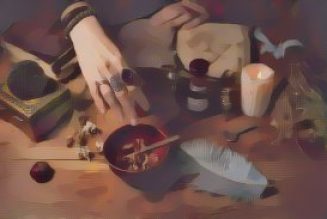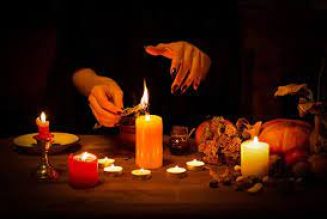The castles of our system are based on Grail Lore, but they also have representations in the none world.
These castles are symbolic of the energies inherent in their names and attributed to them by myth and legend.
In the Arthurian cycle, the knights journey to seven castles, but most mythographers interpret this imram as an Otherworldly voyage, akin to the shaman’s journey into the soul, using the World Tree as a ladder.
Robert Graves, in The White Goddess, indicates that each of the seven castles is synonymous with the Spiral Castle, Caer Sidhe (or Caer Arianrhod).
Graves’ interpretation makes good sense to us. Each of the castles is so intimately connected in symbolism and meaning, and it is impossible to separate any one of them from gestalt of Caer Sidhe.
It is based on this concept that, while we talk about the castles as separate places, we ultimately view them each as a tower or turret on the great Spiral Castle.
The Castle of Stone is the home of Cernunnos, in our system.
He is the keeper of the castle and the guardian of its treasure, the Stone Bowl.
Cernunnos is honored at Summer Solstice as the Oak King, and the totems present in his time of honor are the Oak, Stag, and Robin.
One of the names of the Castle of Stone is the “4-cornered castle,” in Welsh Caer Bannawg. This name became Carbonic or Carbonak later.
Graves suggests that this castle is in fact a burial place like a kristvaen (which is formed from four stone slabs that make a stone box). It has also been suggested that “4-cornered” refers to the castle rotating four times, which certainly ties it symbolically to the Spiral Castle.
Carbonak is an important locale in Grail myth, as it is the home of Elaine (the Grail Maiden, wife of Lancelot, and mother of Galahad). It is here that the Grail is revealed in the saga, when Elaine shows it to Lancelot.
The Old French version of this name is cor beneoit, meaning both ‘blessed horn’ (alluding to the Grail as a horn of plenty) and ‘blessed body’ (referring to the Grail as a Eucharistic vessel).
The reference to horn also works nicely as an allusion to the Horned God of this keep.
Carbonak is also heavily associated with ravens and with Bran the Blessed. Corbin, which the castle is called in certain parts of the myth, is the Old French word for “raven.”
Bran means raven in Welsh and Cornish. An extent hill-fort in Penwith, Cornwall is associated with Carbonak, and it is called Caer Bran.
The Brythonic possessive version of this name is Kernowek. Castell Dinas Bran (“Castle of the City of Crows”) in Wales is assumed by scholars to be the most likely site of Carbonak, however.
Bran is inescapably tied to the Grail mythologies in the sense that he, too, went on a voyage in search of a sacred vessel, The Cauldron of Rebirth.
Like the Grail-King, he was pierced by a spear and the land suffered until he was healed. Bran is honored and remembered in the Arthurian cycle as Brons, one of Arthur’s knights, the son-in-law of Joseph of Arimehtea (who, of course, is said to have brought the grail — as cup of Christ — into Celtic lands).
The Stone Castle is no palace, no place of luxury or entertainment. It is a fortress, a place of training and of siege.
It is the Vault of the Mysteries. It is a place of safety, and it is a storehouse.
It is a seat of power and is built at a site of strength (or one with protective needs).
Several castles and forts spring to mind when envisioning Caer Bannawg for oneself.
The Krak de Chevaliers, for instance, is a wonderful example of a medieval fortress. It is a “Mont & Bailey” castle, and it is practically impenetrable.
It is functional and foreboding, and it takes very little manpower to defend it.





















